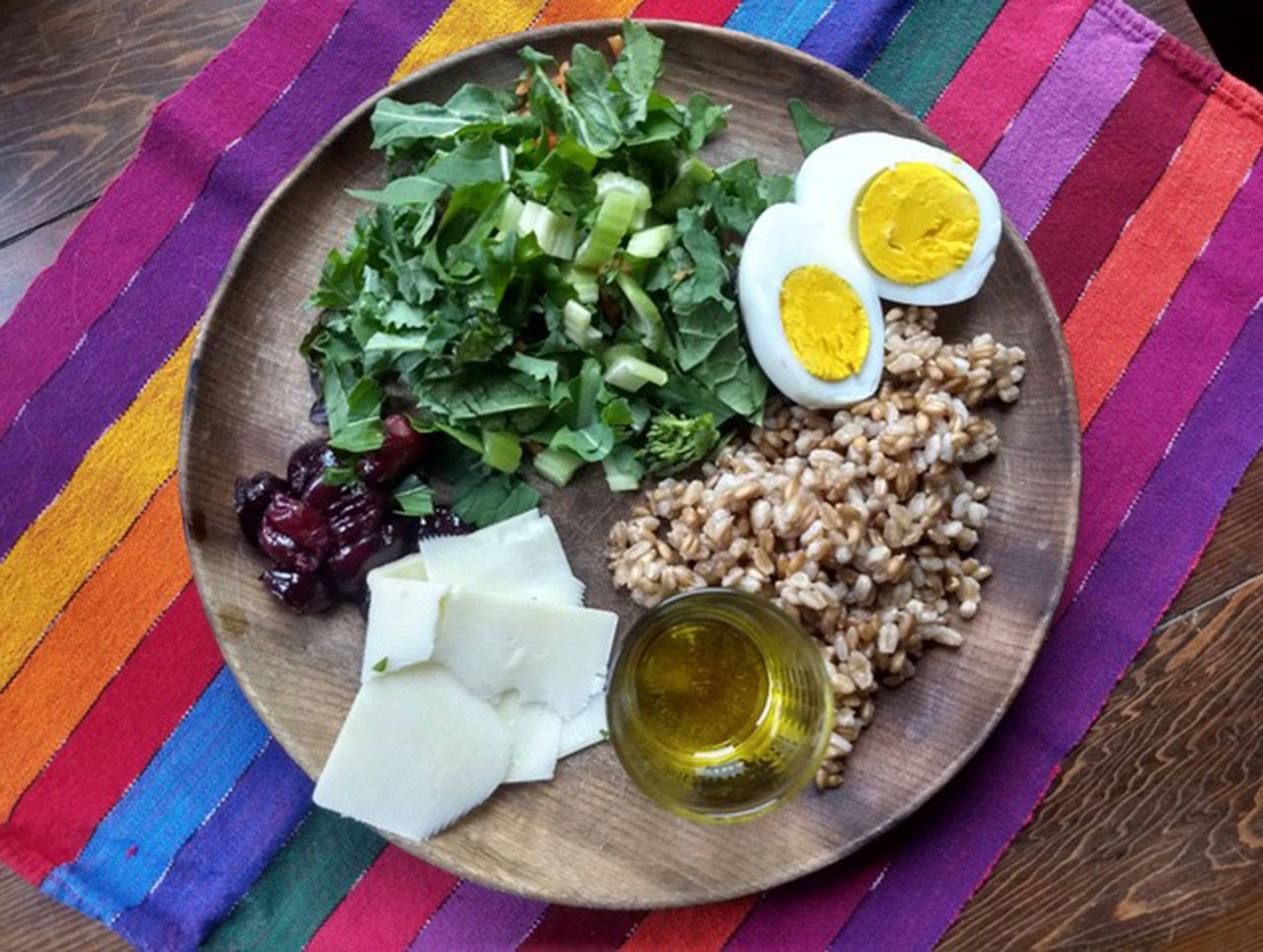FORGIVE ME WHILE I geek out a little about nutrition.
Remember the old USDA Food Pyramid?
With grains comprising the largest bottom layer, then fruits and vegetables, then meat and dairy with a tiny little bit of fats and oils on the tip top.
It was designed to encourage a grain based low-fat diet.
A few years ago, the pyramid was replaced with Choose My Plate, a simple pie chart with a new message.
Half your plate at every meal should be filled with fruits and veggies.
I don’t know about you, but I rarely sit down to a meal on a plate where all the various food groups are separately arranged in a pie chart fashion.
More likely we have a casserole or stir fry where various food groups are all mixed up together.
Because I am preparing some recipes for a cooking class this summer through WSU Extension and the Sequim Food Bank, I decided to dig into this topic and make a tangible example of a My Plate meal.
I looked up serving sizes on the myplate.gov website.
The photo in this article is a My Plate compliant deconstructed Chop Chop Salad that could serve as 1/3 of the daily recommended nutrition for a female adult.
I wouldn’t take the trouble to weigh everything out like this every day, but once in a while, it is an enlightening project.
Chop Chop Salad: a meal in a bowl
Start with a large bowl, a knife and a cutting board.
Quantities listed are for one meal for one person, feel free to scale up as needed:
1¾ cup chopped veggies
½ cup fruit
½ cup cooked grain
1 boiled egg or 1 ounce tuna or other lean meat
1 ounce cheese
1 tablespoon homemade salad dressing
Rinse and chop your choice of seasonal vegetables.
In addition to fresh vegetables, consider adding a chopped dill pickle or a spoonful of lacto-fermented kraut.
Fermented sours are probiotic and add a lot of flavor, especially if you are trying to follow the My Plate guideline, something pickled will make your tablespoon of dressing seem like more.
Next add some protein: a hard-boiled egg, smoked salmon, canned tuna, nuts or seeds, or beans such as garbanzo.
For the carbohydrate, I used some cooked wheat berries (grown by our very own Nash’s Organic produce) but you could substitute with another grain such as rice or quinoa, or even croutons.
Finally add fruit such as any kind of berry, chopped apple or raisins.
Toss all this together with a simple vinaigrette.
Allow everything to rest or marinate together for an hour or more, allowing all of the flavors to blend before serving.
Make extra and save some for another day because this salad improves with time.
Homemade salad dressing
½ cup olive oil
¼ cup your favorite vinegar or lemon juice
1 teaspoon mustard
A pinch of dried thyme, or a small sprig of fresh
2 cloves crushed garlic or ½ teaspoon garlic powder
salt and pepper to taste
Last year I had the opportunity to spend a day in a cooking class with cookbook author and whole foods proponent Sally Fallon morel.
Her advice, “if there is one thing you could do to improve your health is to make your own salad dressing.”
Depending on your family size and how often you eat salad, make a double or triple batch.
The flavor improves over time.
________
Betsy Wharton is the proprietor of the Clallam Canning Co., a local purveyor of artisan pickles and other farm to jar goods. You can find her and her products at the Sprouting Hope Greenhouse at 826 E. First St. in Port Angeles. Or contact her at betsy@clallam canningcompany.com.

